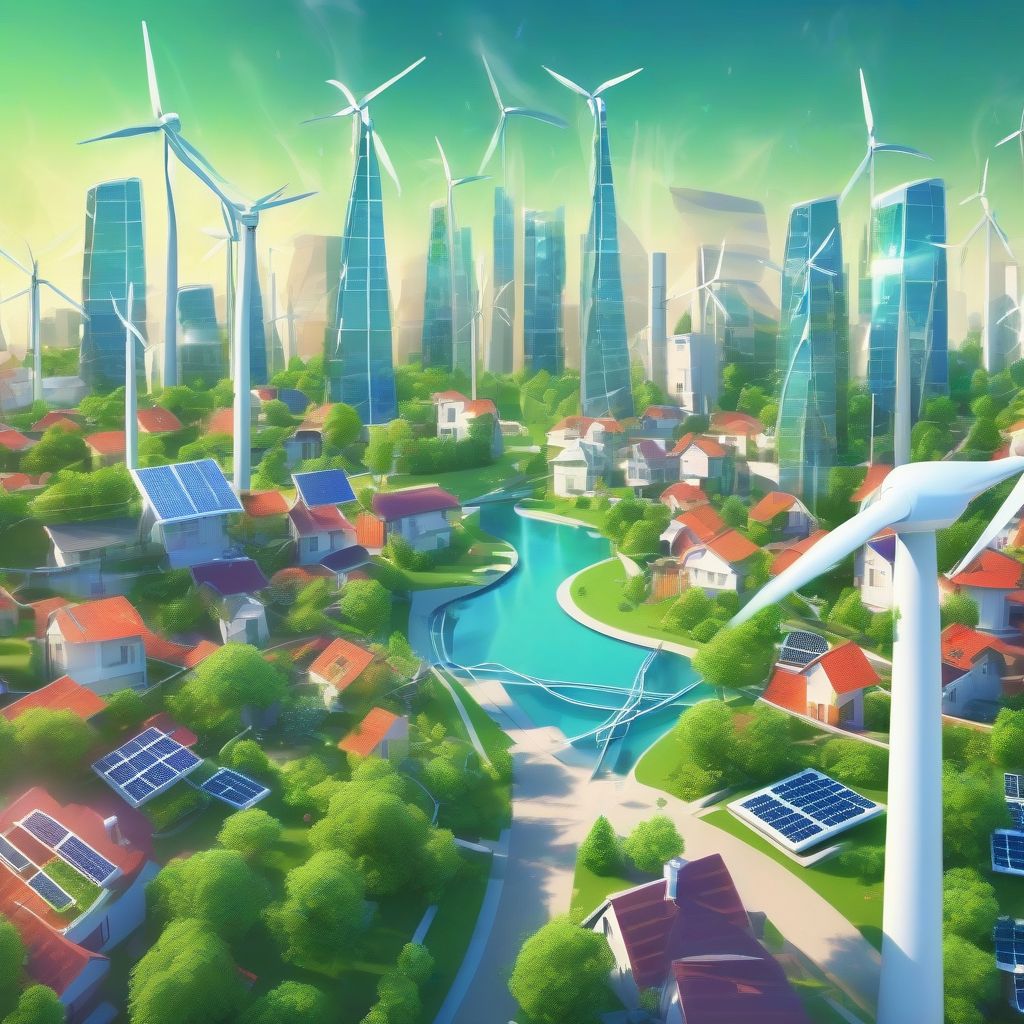Imagine a world powered by the sun, wind, and waves – a world free from the choking grip of fossil fuels. This isn’t a utopian dream, but a very real possibility within our reach. The key? Clean energy. Transitioning to clean energy sources is not just an environmental imperative, it’s the cornerstone of achieving net-zero goals and building a sustainable future for generations to come.
What is Net-Zero and Why Does it Matter?
Net-zero refers to a state where the amount of greenhouse gases (GHGs) entering the atmosphere is balanced by the amount removed. Reaching net-zero emissions is crucial to mitigating climate change and limiting global warming to safe levels. The consequences of unchecked climate change are dire, including rising sea levels, extreme weather events, and disruptions to ecosystems.
The Crucial Role of Clean Energy
Clean energy technologies, such as solar, wind, hydro, geothermal, and nuclear power, produce little to no greenhouse gas emissions during operation. Replacing fossil fuels with these clean alternatives is the most effective way to reduce our carbon footprint and achieve net-zero targets.
Reducing Greenhouse Gas Emissions
The burning of fossil fuels for electricity generation, transportation, and industrial processes is the primary source of human-caused GHG emissions. Clean energy offers a direct substitute, significantly reducing our reliance on these polluting sources. As Professor Emily Carter, an energy and environment expert, aptly puts it, “Clean energy is not just an option; it’s a necessity for the survival of our planet.”
Mitigating Climate Change Impacts
By transitioning to clean energy, we can mitigate the worst impacts of climate change. Lowering GHG emissions helps stabilize global temperatures, preventing further sea-level rise and reducing the frequency and intensity of extreme weather events.
Creating a Sustainable Energy Future
Clean energy sources are renewable, meaning they are constantly replenished and won’t run out like fossil fuels. This ensures a long-term, sustainable energy supply for future generations. Furthermore, investing in clean energy creates new jobs and stimulates economic growth.
Common User Queries about Clean Energy and Net-Zero
What are the most effective clean energy technologies? The most effective technologies vary depending on location and resources. Solar and wind power are currently the most widely deployed, while other promising technologies include geothermal, hydro, and advanced nuclear.
How can individuals contribute to the clean energy transition? Individuals can support clean energy by installing solar panels on their homes, choosing renewable energy plans from their utility providers, and adopting energy-efficient practices.
What are the economic benefits of transitioning to clean energy? Clean energy creates new jobs in manufacturing, installation, and maintenance, while also reducing healthcare costs associated with air pollution. It also enhances energy security by reducing dependence on volatile fossil fuel markets.
Overcoming Challenges in Clean Energy Adoption
While the benefits of clean energy are undeniable, some challenges remain. These include:
Intermittency of Renewable Sources
Solar and wind power are intermittent, meaning their output fluctuates depending on weather conditions. Addressing this requires developing energy storage solutions and improving grid management.
Upfront Costs
The initial investment in clean energy infrastructure can be significant. However, costs have been decreasing rapidly, and government incentives and financing options are making clean energy increasingly affordable.
Public Perception and Acceptance
Educating the public about the benefits of clean energy and addressing concerns about its reliability are crucial for widespread adoption. Transparency and community engagement are essential in this process.
A Call to Action: Embracing a Clean Energy Future
The transition to clean energy is not merely a technological shift; it’s a societal transformation. It requires collaboration between governments, businesses, and individuals. We must embrace innovative solutions, invest in research and development, and promote policies that support clean energy deployment. The future of our planet depends on it.
 Clean Energy and Net-Zero Goals
Clean Energy and Net-Zero Goals
Conclusion
Clean energy is the cornerstone of achieving net-zero goals and mitigating climate change. By transitioning to renewable energy sources, we can reduce GHG emissions, create a sustainable energy future, and build a healthier planet for all. While challenges remain, the benefits far outweigh the costs. Let’s embrace this opportunity and work together to create a cleaner, brighter future. Share your thoughts on clean energy and how we can accelerate its adoption in the comments below!



